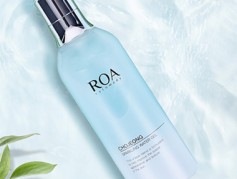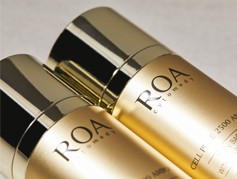
Makeup is a crucial aspect in the world of commercial shoots, as it pl…
Emelia
2024-10-28 13:18
3
0
본문
Contouring is the process of using a darker shade of makeup to create shadows and define certain areas of the face, while highlighting involves using a lighter shade to bring forward and emphasize the high points of the face. When done correctly, contouring and highlighting can help create the illusion of more prominent cheekbones, a slimmer nose, a more defined jawline, and overall enhance the natural features of the face.
Importance of Understanding Ethnic Diversity:
Appreciating and understanding ethnic diversity is crucial for fostering a sense of belonging, respect, and empathy within society. By recognizing the rich tapestry of human ethnic makeup, we can celebrate the unique qualities and contributions of different cultural groups. Understanding ethnicity also helps us combat stereotypes, prejudice, and discrimination, promoting a more inclusive and equitable society for all.
To contour the face, a matte bronzer or contour powder that is a few shades darker than your natural skin tone is typically used. Popular areas to contour include the hollows of the cheeks, the temples, the sides of the nose, and the jawline. By applying the darker shade in these areas and blending it out seamlessly, you can create the appearance of more defined features and a more sculpted look.
Additionally, attending a makeup workshop can be a fun and enjoyable experience for individuals of all skill levels. Whether you are a complete beginner looking to learn the basics of makeup application or an experienced makeup enthusiast wanting to refine your techniques, there is always something new to learn and discover in these workshops. The hands-on approach and interactive nature of the workshops create an engaging and dynamic learning environment that makes the experience both educational and entertaining.
Collaboration with the creative team is also essential when doing makeup for commercial shoots. Makeup artists work closely with photographers, art directors, stylists, and clients to understand the desired look and branding of the shoot. They must be able to translate the creative vision into makeup looks that align with the overall concept of the campaign. Communication skills are key in this process, as makeup artists need to be able to take direction, offer suggestions, and make adjustments as necessary to achieve the desired result.
Contouring and highlighting can be tailored to suit different face shapes and preferences. While some may prefer a more dramatic and defined look, others may opt for a softer and more natural effect. Experimenting with different techniques and products can help you find what works best for your individual features and desired look.
7. **Communication:** Communication between the makeup artist and the photographer is key to achieving the desired results. It is essential for the makeup artist to understand the concept of the photo shoot, the lighting conditions, and the aesthetic preferences of the photographer to create makeup that complements the overall vision.
When contouring and highlighting, it's essential to blend the products well to create a seamless and natural-looking finish. Using the right tools, such as makeup brushes or sponges, can help achieve a flawless application. Additionally, choosing the right shades of contour and highlight that complement your skin tone is crucial to achieving a harmonious and flattering look.
One of the key aspects of makeup for music videos is understanding the overall concept and theme of the video. The makeup should complement the artistic vision of the song and video, whether it's edgy and avant-garde or glamorous and classic. It's important for makeup artists to collaborate closely with directors and stylists to ensure that the makeup aligns with the overall aesthetic of the video.
One of the key considerations when doing makeup for commercial shoots is the need for it to look natural yet striking. The makeup should enhance the features of the model or actor without overpowering them. This means using products and techniques that are tailored to each individual's skin tone, facial structure, and the specific requirements of the shoot. Makeup artists must also take into account the lighting conditions of the set, as different lighting setups can affect how the makeup appears on camera. For instance, harsh studio lights may require more matte products to prevent unwanted shine, while outdoor shoots may call for more subtle, glowing looks.
Highlighting, on the other hand, involves using a lighter shade of makeup, such as a highlighter or illuminating powder, to bring luminosity and brightness to the high points of the face. Common areas to highlight include the tops of the cheekbones, the brow bone, the bridge of the nose, and the cupid's bow. Adding highlighter to these areas helps to create a radiant and glowing complexion while drawing attention to the features you want to emphasize.
Another important aspect of makeup for commercial shoots is its longevity. Models and actors may be required to wear makeup for hours on end, and it is crucial that the Flushing makeup artist stays fresh and intact throughout the shoot. This requires the use of high-quality, long-wearing products such as primers, setting sprays, and waterproof formulas. Additionally, makeup artists must touch up the makeup as needed to ensure that the look remains flawless during breaks and between takes.
Importance of Understanding Ethnic Diversity:
Appreciating and understanding ethnic diversity is crucial for fostering a sense of belonging, respect, and empathy within society. By recognizing the rich tapestry of human ethnic makeup, we can celebrate the unique qualities and contributions of different cultural groups. Understanding ethnicity also helps us combat stereotypes, prejudice, and discrimination, promoting a more inclusive and equitable society for all.
To contour the face, a matte bronzer or contour powder that is a few shades darker than your natural skin tone is typically used. Popular areas to contour include the hollows of the cheeks, the temples, the sides of the nose, and the jawline. By applying the darker shade in these areas and blending it out seamlessly, you can create the appearance of more defined features and a more sculpted look.
Additionally, attending a makeup workshop can be a fun and enjoyable experience for individuals of all skill levels. Whether you are a complete beginner looking to learn the basics of makeup application or an experienced makeup enthusiast wanting to refine your techniques, there is always something new to learn and discover in these workshops. The hands-on approach and interactive nature of the workshops create an engaging and dynamic learning environment that makes the experience both educational and entertaining.
Collaboration with the creative team is also essential when doing makeup for commercial shoots. Makeup artists work closely with photographers, art directors, stylists, and clients to understand the desired look and branding of the shoot. They must be able to translate the creative vision into makeup looks that align with the overall concept of the campaign. Communication skills are key in this process, as makeup artists need to be able to take direction, offer suggestions, and make adjustments as necessary to achieve the desired result.
Contouring and highlighting can be tailored to suit different face shapes and preferences. While some may prefer a more dramatic and defined look, others may opt for a softer and more natural effect. Experimenting with different techniques and products can help you find what works best for your individual features and desired look.
7. **Communication:** Communication between the makeup artist and the photographer is key to achieving the desired results. It is essential for the makeup artist to understand the concept of the photo shoot, the lighting conditions, and the aesthetic preferences of the photographer to create makeup that complements the overall vision.
When contouring and highlighting, it's essential to blend the products well to create a seamless and natural-looking finish. Using the right tools, such as makeup brushes or sponges, can help achieve a flawless application. Additionally, choosing the right shades of contour and highlight that complement your skin tone is crucial to achieving a harmonious and flattering look.
One of the key aspects of makeup for music videos is understanding the overall concept and theme of the video. The makeup should complement the artistic vision of the song and video, whether it's edgy and avant-garde or glamorous and classic. It's important for makeup artists to collaborate closely with directors and stylists to ensure that the makeup aligns with the overall aesthetic of the video.
One of the key considerations when doing makeup for commercial shoots is the need for it to look natural yet striking. The makeup should enhance the features of the model or actor without overpowering them. This means using products and techniques that are tailored to each individual's skin tone, facial structure, and the specific requirements of the shoot. Makeup artists must also take into account the lighting conditions of the set, as different lighting setups can affect how the makeup appears on camera. For instance, harsh studio lights may require more matte products to prevent unwanted shine, while outdoor shoots may call for more subtle, glowing looks.
Highlighting, on the other hand, involves using a lighter shade of makeup, such as a highlighter or illuminating powder, to bring luminosity and brightness to the high points of the face. Common areas to highlight include the tops of the cheekbones, the brow bone, the bridge of the nose, and the cupid's bow. Adding highlighter to these areas helps to create a radiant and glowing complexion while drawing attention to the features you want to emphasize.
Another important aspect of makeup for commercial shoots is its longevity. Models and actors may be required to wear makeup for hours on end, and it is crucial that the Flushing makeup artist stays fresh and intact throughout the shoot. This requires the use of high-quality, long-wearing products such as primers, setting sprays, and waterproof formulas. Additionally, makeup artists must touch up the makeup as needed to ensure that the look remains flawless during breaks and between takes.


